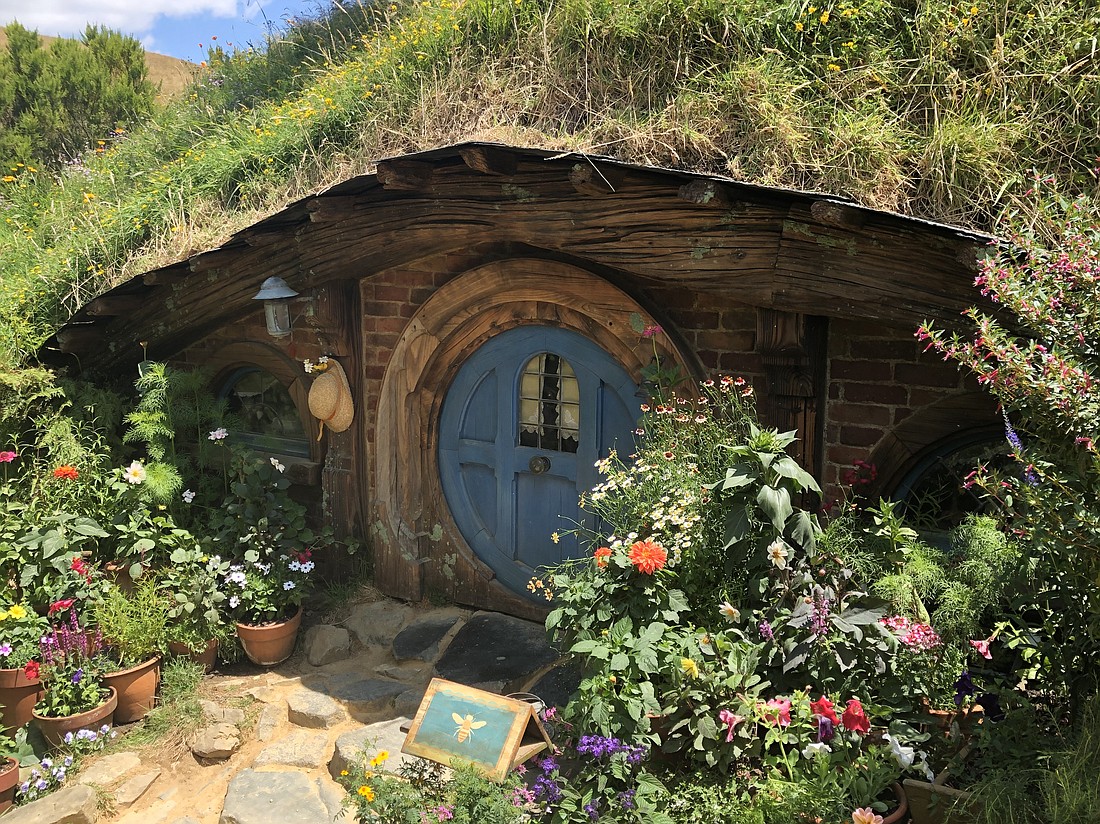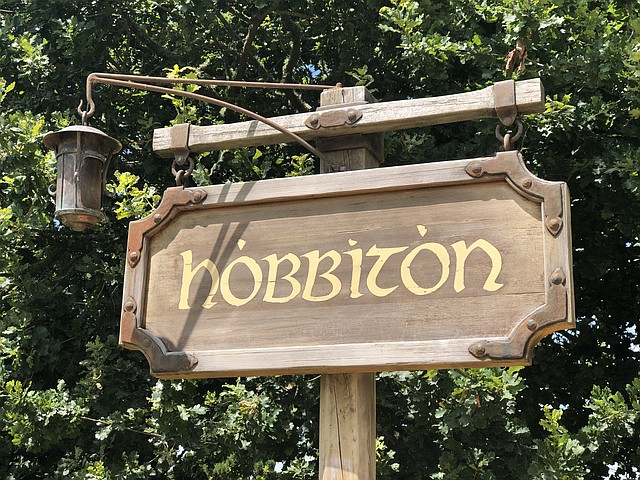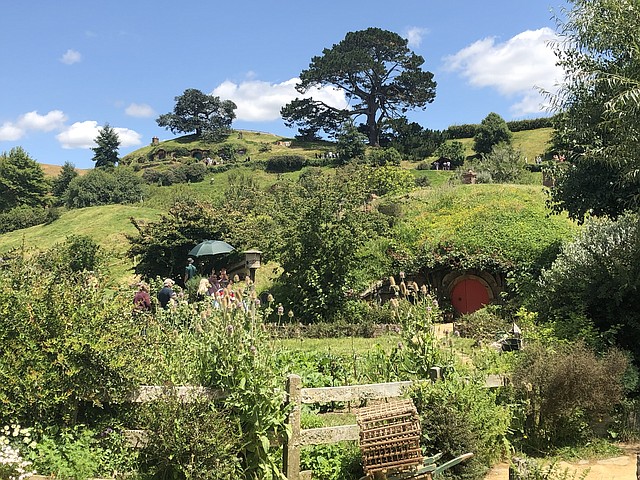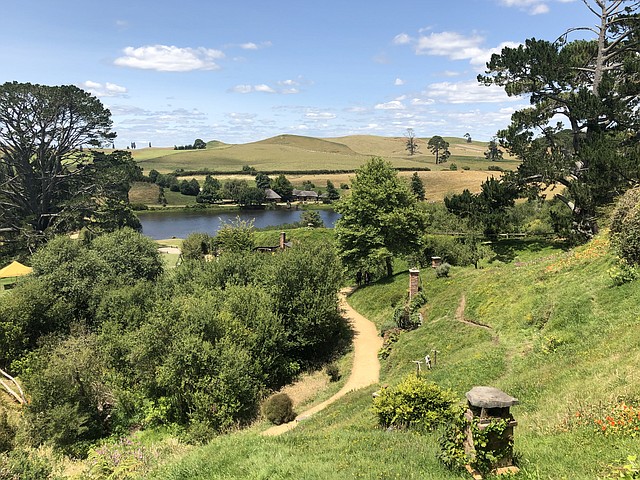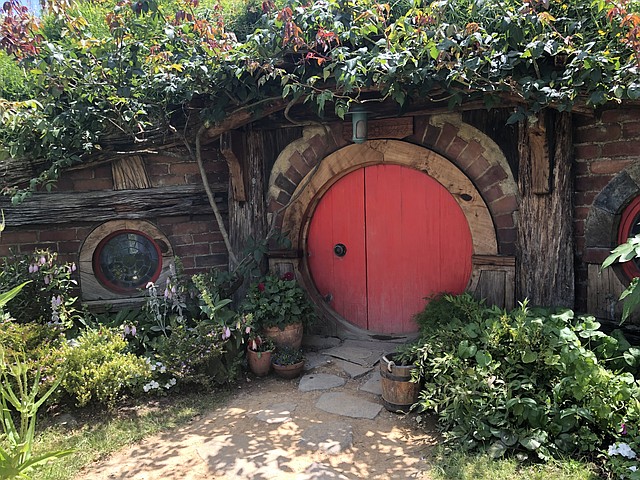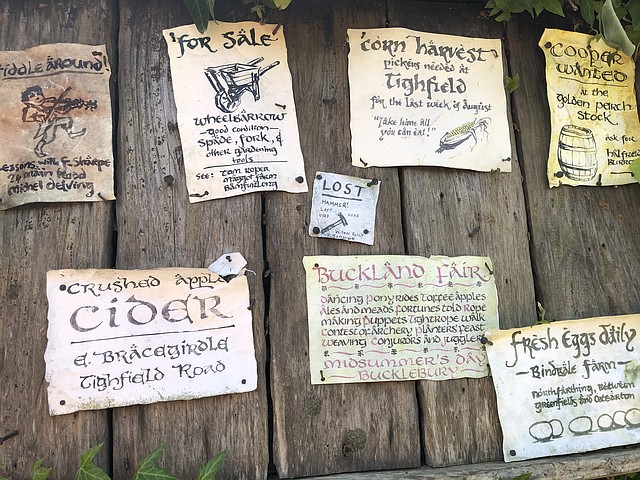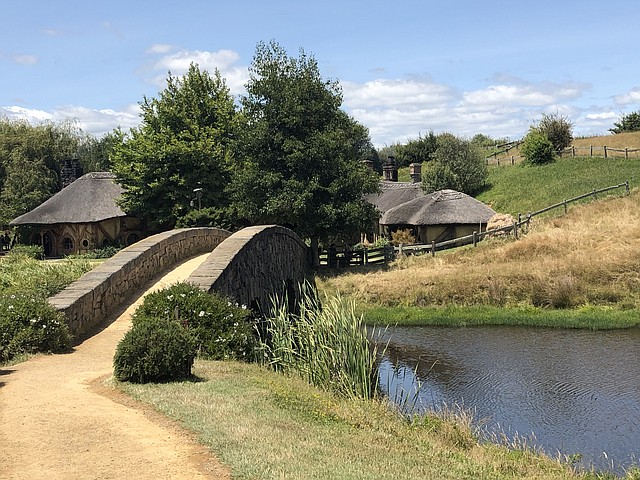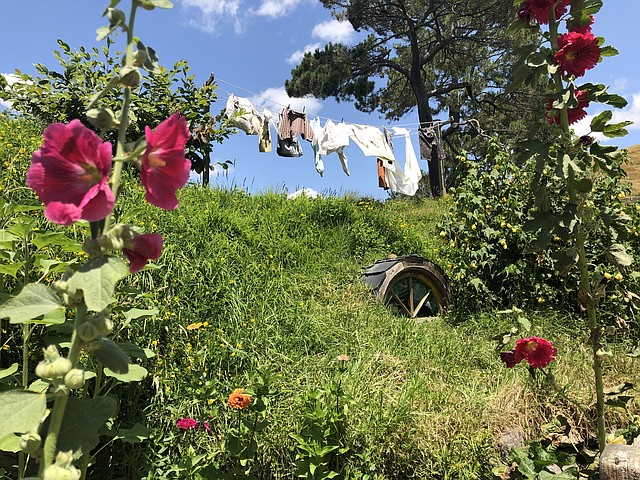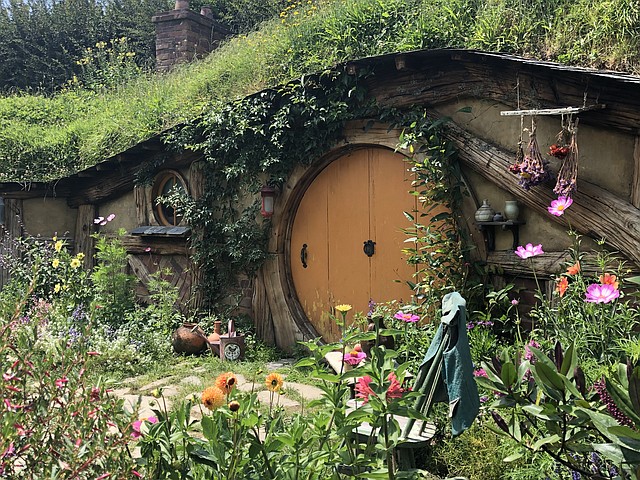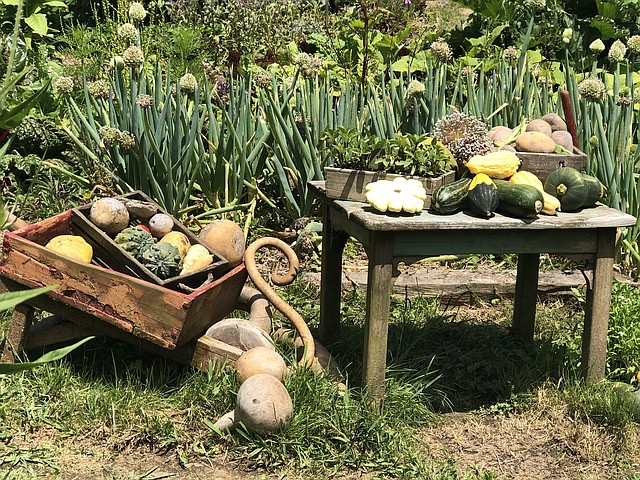Step into Middle Earth with a visit to Hobbition
May 1, 2020 at 6:00 a.m.
I’m a petite, or if you must say, short woman. At 5 feet two (on a good day!), I’m height-challenged. If I don’t have a stepstool, I’m at the mercy of asking others to help me reach those unattainable objects. In crowds, I’m constantly jumping up and down to see what’s happening, or trying to inch my way under and around everyone’s elbows. And I always have to take up the hem on my pants.
Being short, however, is a plus when you visit Hobbiton in New Zealand, the famed movie set home of J.R.R. Tolkien’s hobbits. You know, the happy-go-lucky ones with chubby cheeks and wide grins, who like to tell jokes and drink ginger beer, rather than stress over the state of the world.
I’ve always been a fan of the well-known author’s books for many years, and an equally ardent aficionado of the movies made from his novels. They enveloped me in a world of good versus evil fantasy with a slew of memorable characters and wild adventures. And of course, I identified with the “little folk.” So, naturally I put Hobbiton down on my itinerary as soon as I knew I was going to New Zealand.
The Hobbiton Movie Set is a must for fans of “The Hobbit” and “The Lord of the Rings” trilogies. It’s the country’s only set left from the movies and attracts nearly 650,000 tourists and wannabe hobbits a year. But, even if you’re not a fan of the books or the movies, you’re going to enjoy the experience because it’s such an enchanting place. The scenery alone is worth the trip, as it’s true New Zealand bucolic, framed by the towering Kaimai Ranges in the distance. And as a bonus, you’ll be able to say that you were on the only living movie set in the world.
The site is near the village of Matamata, about 110 miles southeast of Auckland on New Zealand’s North Island. It’s actually a working sheep farm, owned by the Alexander family. Story has it that back in September 1998, “Lord of the Rings” director Sir Peter Jackson was up in his helicopter trying to find the ideal location for the Shire – the iconic home to the hobbits. Once he saw the Alexander’s property with its pastoral setting, complete with rolling hills and lush green pastures, he knew it would be perfect. It bore a striking similarity to Tolkien’s description of the Shire, and it was untouched – no power lines, no roads or buildings in sight – which meant that Jackson could create Middle-earth in all its fanciful glory.
Jackson found the owner’s house and knocked on the door, but unfortunately, the owner was watching rugby and told the director to go away in no uncertain terms. Jackson later returned and to make a long story short plus a few years, some money and lots of manpower (including the New Zealand Army), Hobbiton was born.
The twelve-acre set was initially made of untreated polystyrene and other non-permanent materials. Once Jackson was finished filming, most of the structures were torn down. And when curious tourists came, eager to get a glimpse of this much beloved site, they had to use their imagination as to what the set looked like before being stripped to its bare bones.
Flash forward to 2009 when Jackson returned to film “The Hobbit” trilogy. The Alexander family agreed to have their property used again with one stipulation - the set had to be constructed of permanent materials to give visitors a more complete rendition of Hobbiton. The entire reconstruction process took two years, while the actual filming, which commenced in October 2011, took only twelve days. At its peak, four hundred people were on site, including at various times Sir Peter Jackson, Sir Ian McKellen (Gandalf), Elijah Wood (Frodo), Sean Astin (Sam), Ian Holm (Bilbo Baggins) and Martin Freeman (young Bilbo Baggins).
With regards to the roughly 13,500 sheep on the Alexander farm, Jackson didn’t think they looked like classic sheep and decided not to use them for filming. Instead, he preferred the dark faces and legs of the Suffolk sheep and had that breed brought to the property.
Additionally, during production, frogs took up residency in the manmade pond located on set. These frogs were so loud during filming that the actors couldn’t hear one another. So, it was one person’s job to gather the frogs and relocate them to another pond on the farm. Ironically, the frogs aren’t even native to New Zealand, as they are an introduced species from Australia.
On a tour of Hobbiton, you’ll be stepping into Middle-earth, as you explore forty-four permanently reconstructed Hobbit Holes, each in the same elaborate detail seen in the films and each with its own building permit. Though the holes are just facades, the intricacies are incredible. Colorful round doors are set into the hillside with moss and lichen-covered picket fences and neat hedges to hem in the well-tended gardens of each dwelling. The fences were made to look old by painting yogurt and vinegar onto the wood, which encouraged the moss growth. Take note of the bounty of produce in the gardens. All the fruits and veggies are real.
Miniature red brick chimneys emerge above the holes and lanterns hang on hooks from the doors. Laundry lines with tiny hobbit-sized clothing flap in the breeze, and brooms and gardening tools stand ready to be used. Each home has a hand painted mailbox, with designs that reflect the occupation of the owner. Sign posts throughout the site are written in Middle Earth cursive style, directing you to the various places around the Shire.
The tour also goes to Bag End, the home of Bilbo and Frodo Baggins, where you’ll be treated to a beautiful view of the famed party tree and lake. Originally, the massive oak tree was cut down and transported in from near Matamata. Artificial leaves were brought in from Taiwan and individually wired onto the tree. Whenever the leaves faded in the sun, someone was paid to repaint each one by one. Later, an artificial tree was constructed out of steel and silicon.
Continuing on, there’s the stone mill with a working water wheel. Take a peek at the noticeboard outside the mill, with its various community messages, such as a note advertising a local fair and a wheelbarrow for sale.
After crossing a small stone bridge, you’ll end the tour at the masterfully-crafted Green Dragon Inn, the meeting place for all the Shire’s residents. The hobbits would gather in this cozy pub, pint in hand, to talk about the events of the day. You, too, can recreate the scene, while enjoying a complimentary beverage. The beers and cider are specially brewed for Hobbiton. You can also buy traditional food such as Beef and Ale Pie and Ploughman’s Sandwiches. Sit by the roaring fire or in the Beer Garden, overlooking the picturesque village. “Tell everyone, they can write me in care of Hobbiton,” I told my companion.
Debbie Stone is an established travel writer and columnist, who crosses the globe in search of unique destinations and experiences to share with her readers and listeners. She’s an avid explorer who welcomes new opportunities to increase awareness and enthusiasm for places, culture, food, history, nature, outdoor adventure, wellness and more. Her travels have taken her to nearly 100 countries spanning all seven continents, and her stories appear in numerous print and digital publications.
